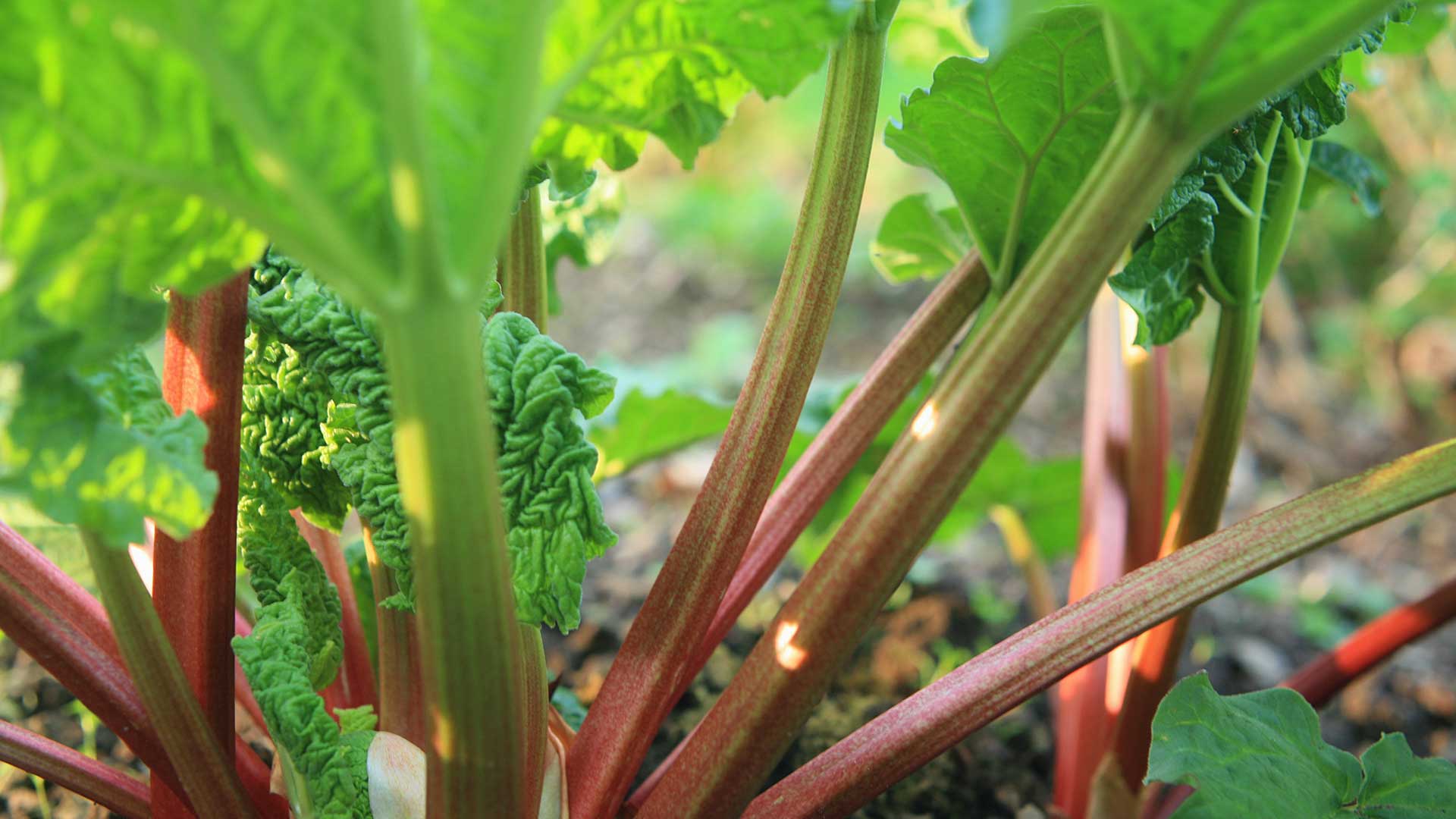
Have you ever wondered how to grow rhubarb? Delicious in a cake, compote, or crumble with custard, the elegant pink and green stems tend to be one of the earliest harvests of the year. Add a forcing pot into the equation and a suitable variety, and you can get picking as soon as March.
Growing rhubarb is ideal for vegetable gardening for beginners (yes, it's considered a vegetable despite being used for desserts). And, as a hardy perennial, it will perform year after year, which is great news if you don’t have time to sow seeds. However, there are some important factors to get right to enjoy the very best from your plant, including choosing the right spot for it and harvesting it in the right way, at the right time.
Below, you’ll find all the essentials for growing rhubarb at home, including plenty of advice from gardening professionals. There are also some top tips on recommended varieties to try.
How to grow rhubarb in your garden for spring and summer harvests
As with most things, knowing how to grow rhubarb successfully starts with proper preparation. You don’t need much: a spade, some gardening gloves, and the plants themselves, which are sold as bare-root crowns or in pots. A variety of rhubarb plants is available at Crocus.
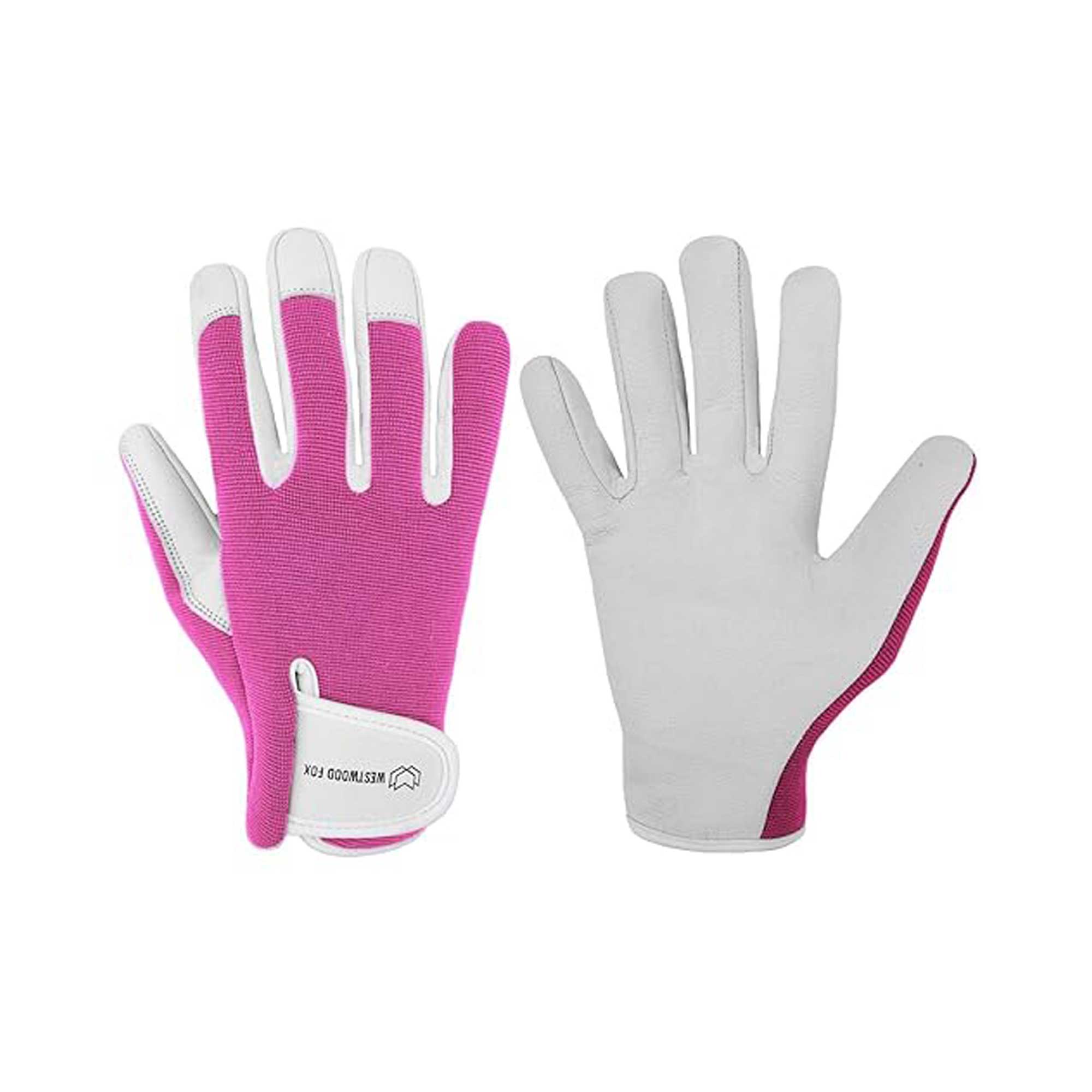
Protect your hands while gardening with these highly-rated, comfortable gloves. If pink isn't your style, there are plenty of other colours to choose from.
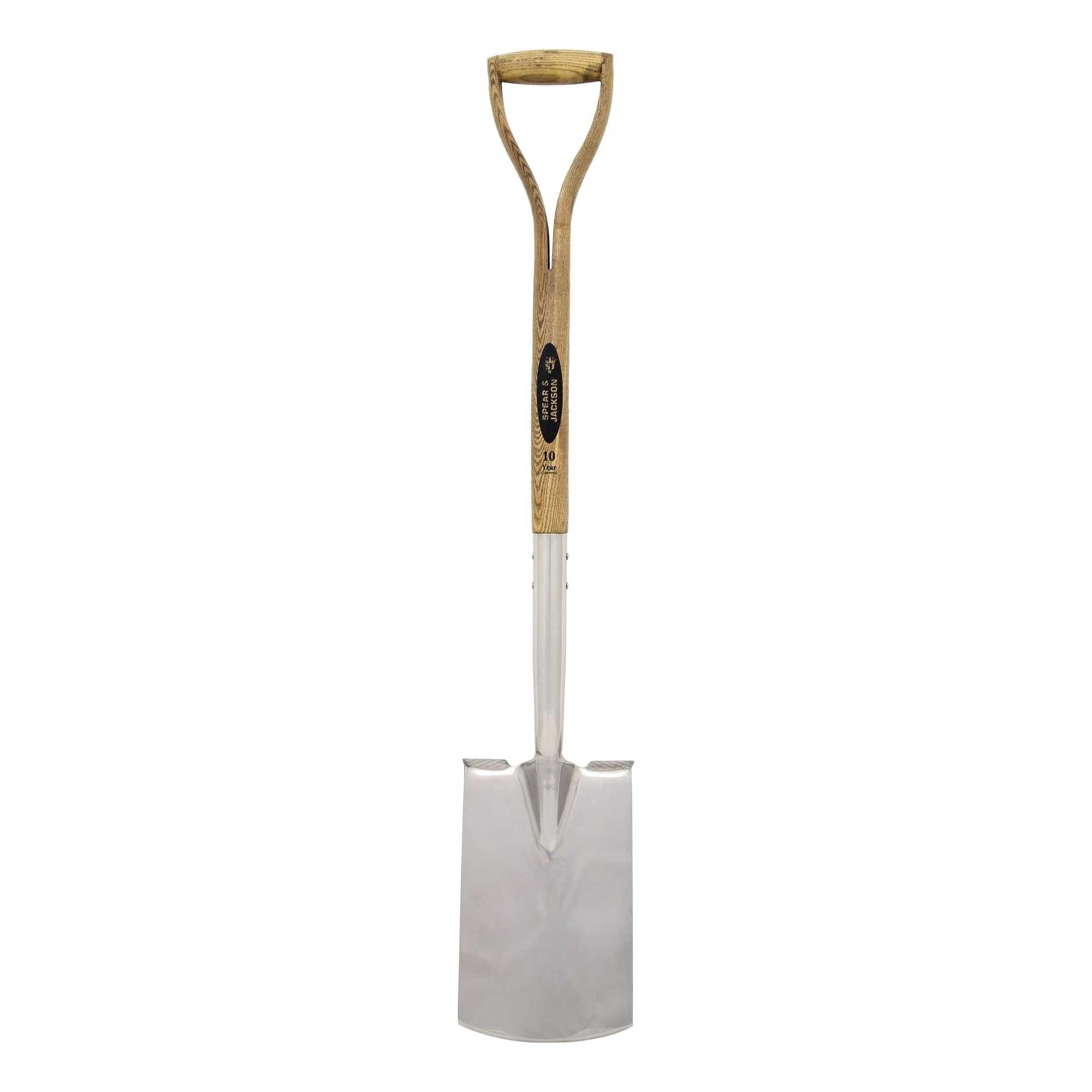
This traditional, stainless steel spade is durable and rust-resistant – an ideal tool for planting rhubarb and other digging tasks in the garden.
When to plant rhubarb
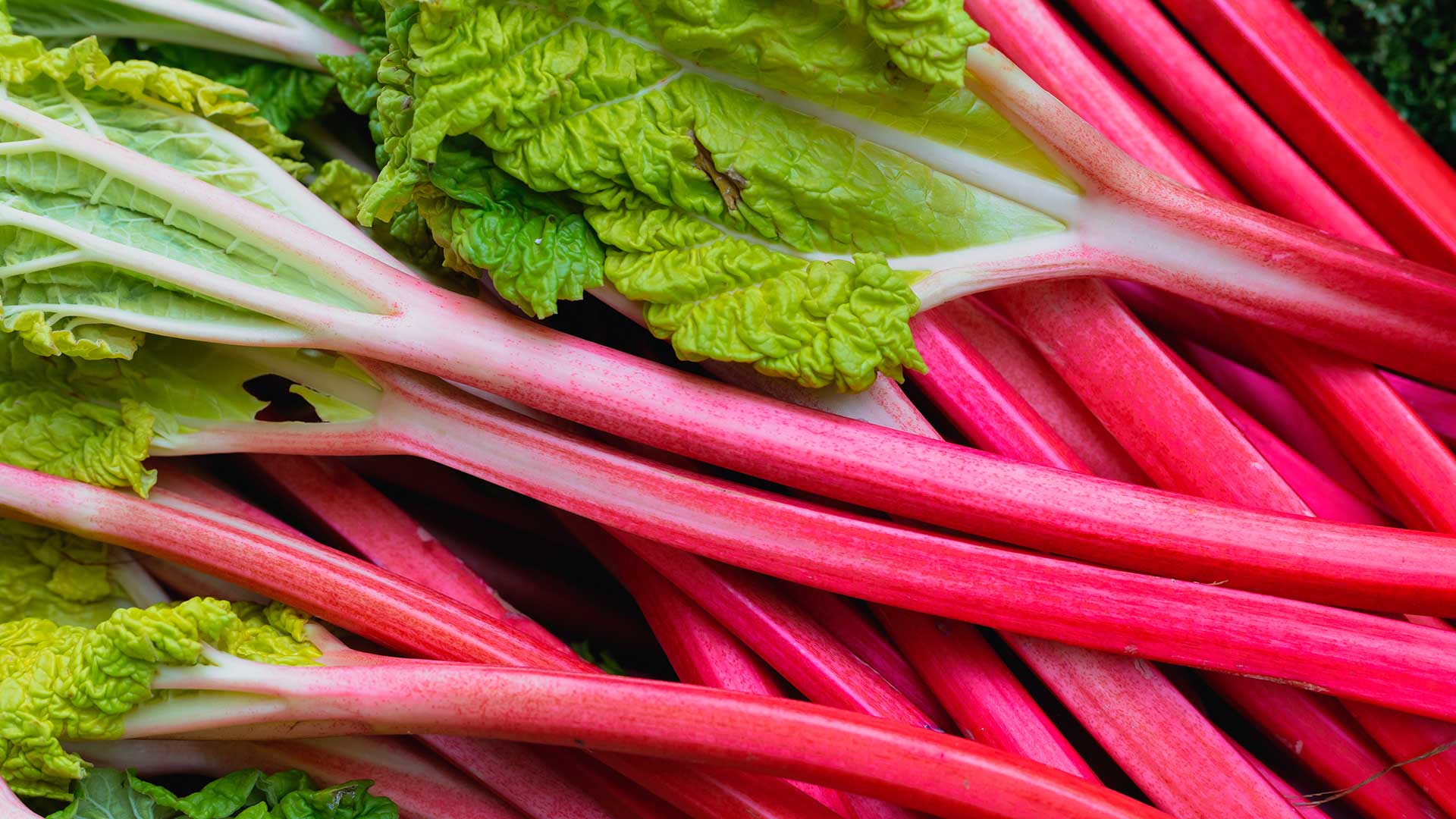
According to Rob Smith from Suttons, the best time to plant rhubarb crowns is in autumn or early spring, while they’re dormant. “Autumn planting gives them a head start, allowing the roots to settle before growth kicks in during spring. If planting in spring, do it as soon as the soil is workable.” This may mean adding it to your list of what to plant in March.
Potted rhubarb plants should be planted in autumn or spring, too, for best results.
Where to plant rhubarb
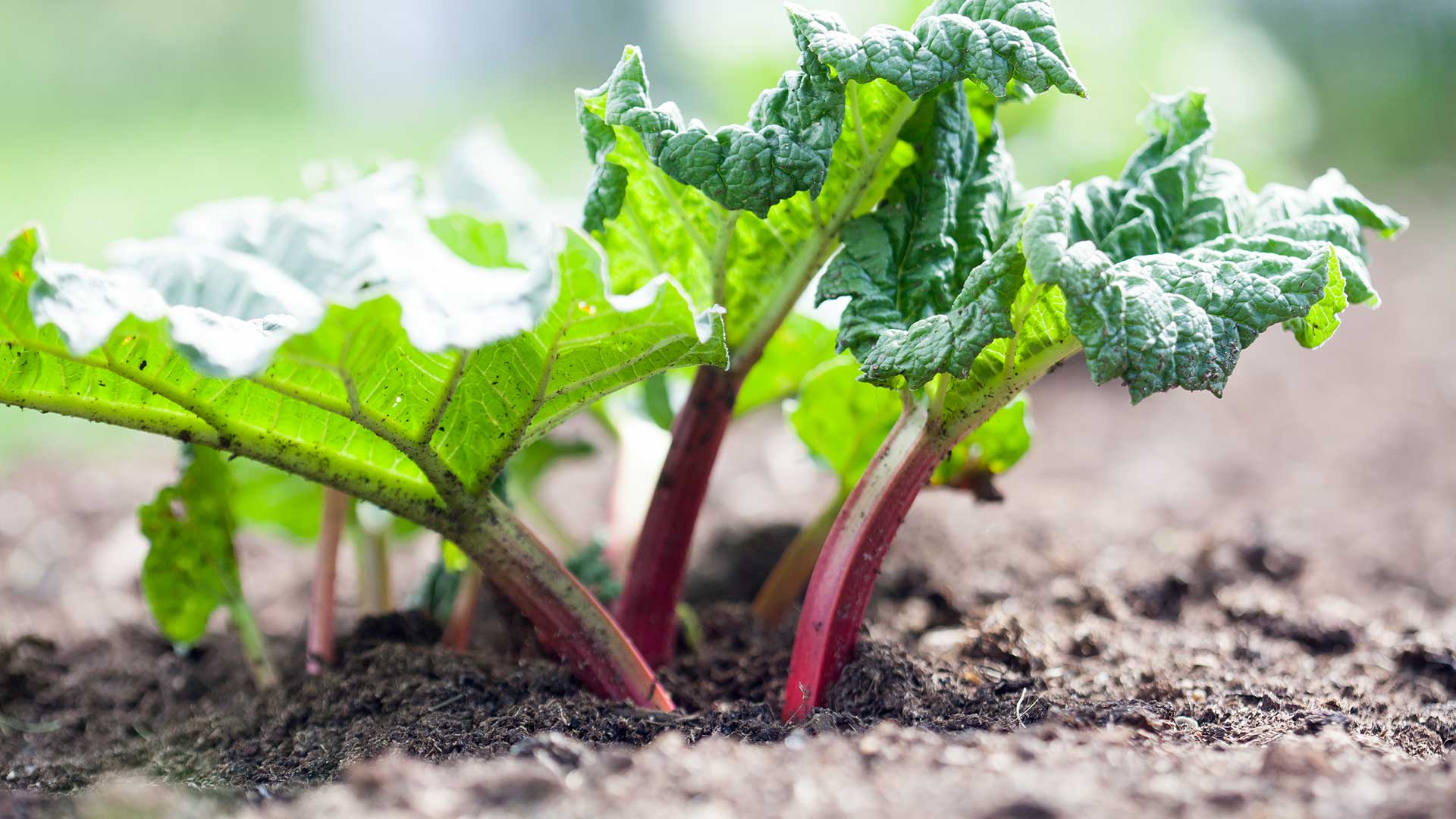
Before you plant your rhubarb, check the soil conditions and how much sunlight the space gets. “Rhubarb prefers a neutral, fertile, well-drained soil in an open and sunny position,” says gardening expert Sarah Raven, adding that although it will grow in shade, it won’t be quite as productive.
Top tip: Rob warns against planting in areas where waterlogging is an issue, as soggy roots spell disaster for rhubarb. “If your soil is heavy clay, dig in plenty of organic matter like well-rotted manure to improve drainage,” he recommends.
How to plant rhubarb
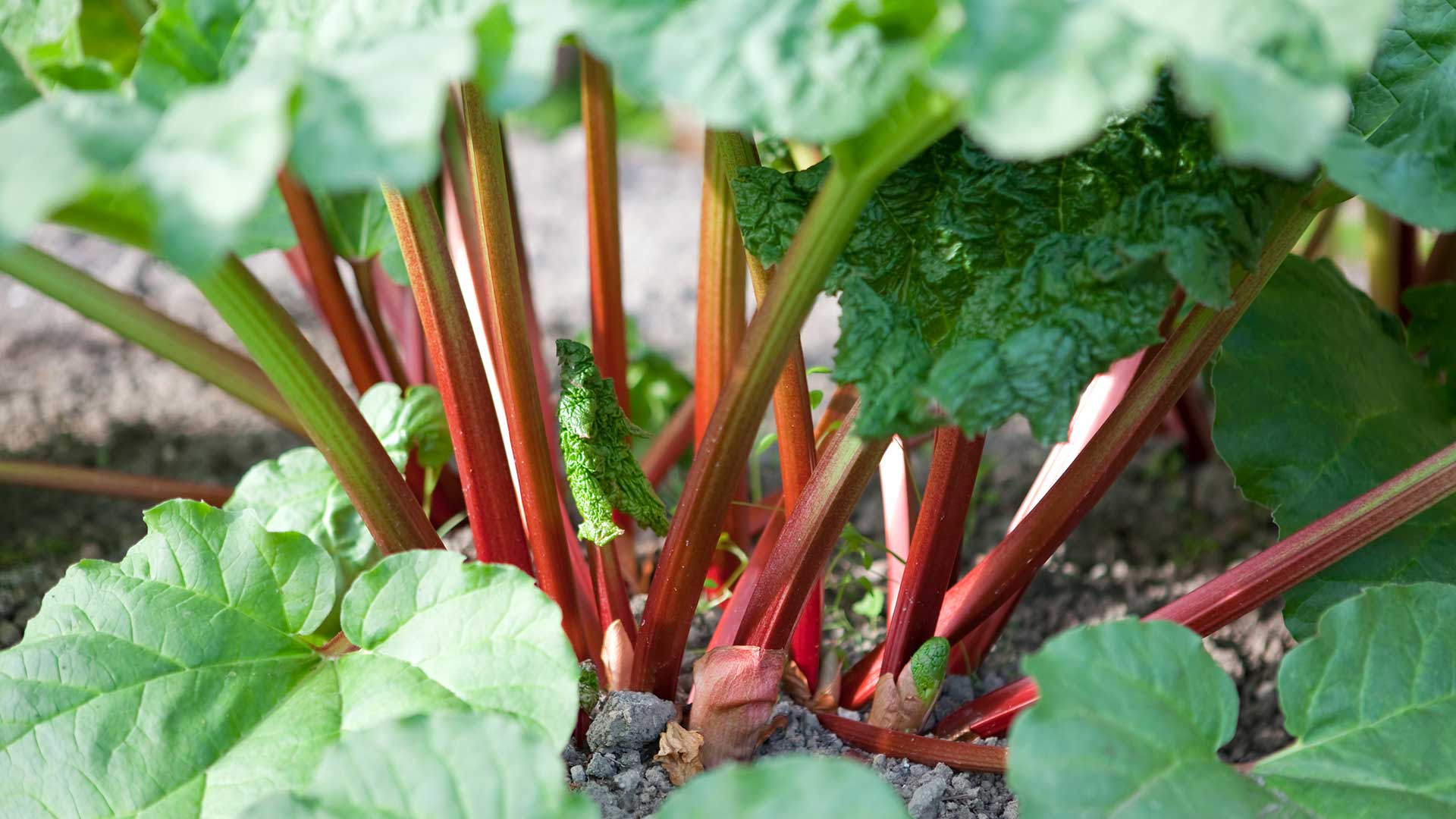
“When planting, first clear the area of all weeds and stones, ensuring you dig large holes to give the crop enough space to thrive,” says Angharad James of Maxicrop. “Plant the crowns with their buds just below the surface of the soil and water well at the time of planting.
“Ensure you give rhubarb room to spread out by planting them four to six feet apart,” she adds.
Caring for rhubarb
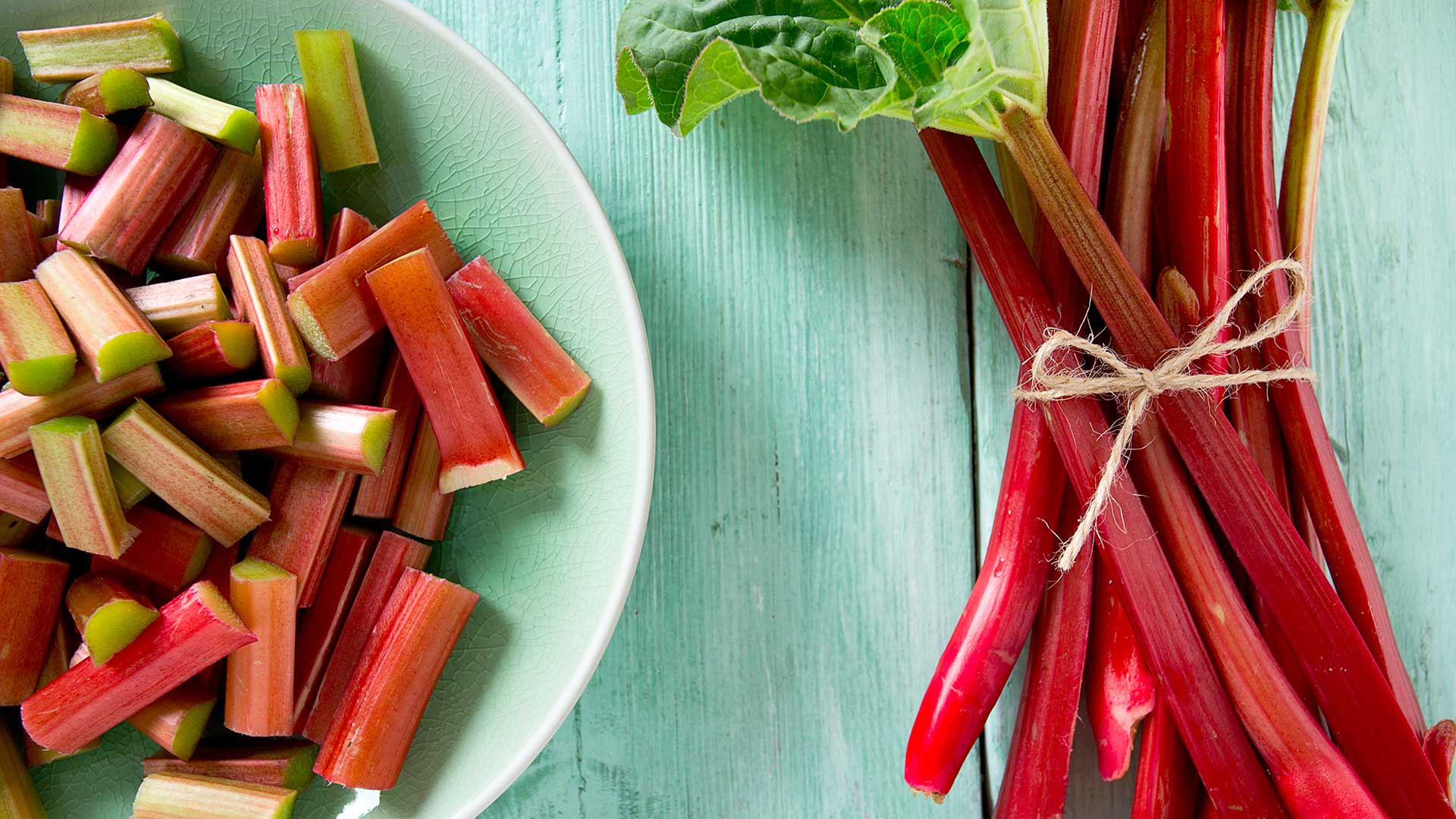
Knowing how to water plants properly is important for an overall healthy garden, and rhubarb should be watered often during its first growing season. However, once established, it doesn’t need much attention – as Sarah explains, its roots grow deep into the ground to find moisture.
An exception to this is if you see it bloom. “In cold, dry conditions, a stressed rhubarb plant sends an impressive flower spike up to the surface to show how keen it is to seed and propagate itself,” says Sarah. “If that happens, remove the flowering spike straight away and water thoroughly.”
Protecting these plants from frost is easy, too – and often, not even necessary. While rhubarb is hardy, a layer of straw or compost over the crowns can offer some protection in particularly cold areas, notes Rob. “Remove it in early spring to prevent rot.” Be aware that the plants die back naturally in late autumn.
Rob also recommends adding a thick mulch of well-rotted manure around (but not on top of) the crowns in early spring: this will feed the plant and suppress weeds.
How to harvest rhubarb
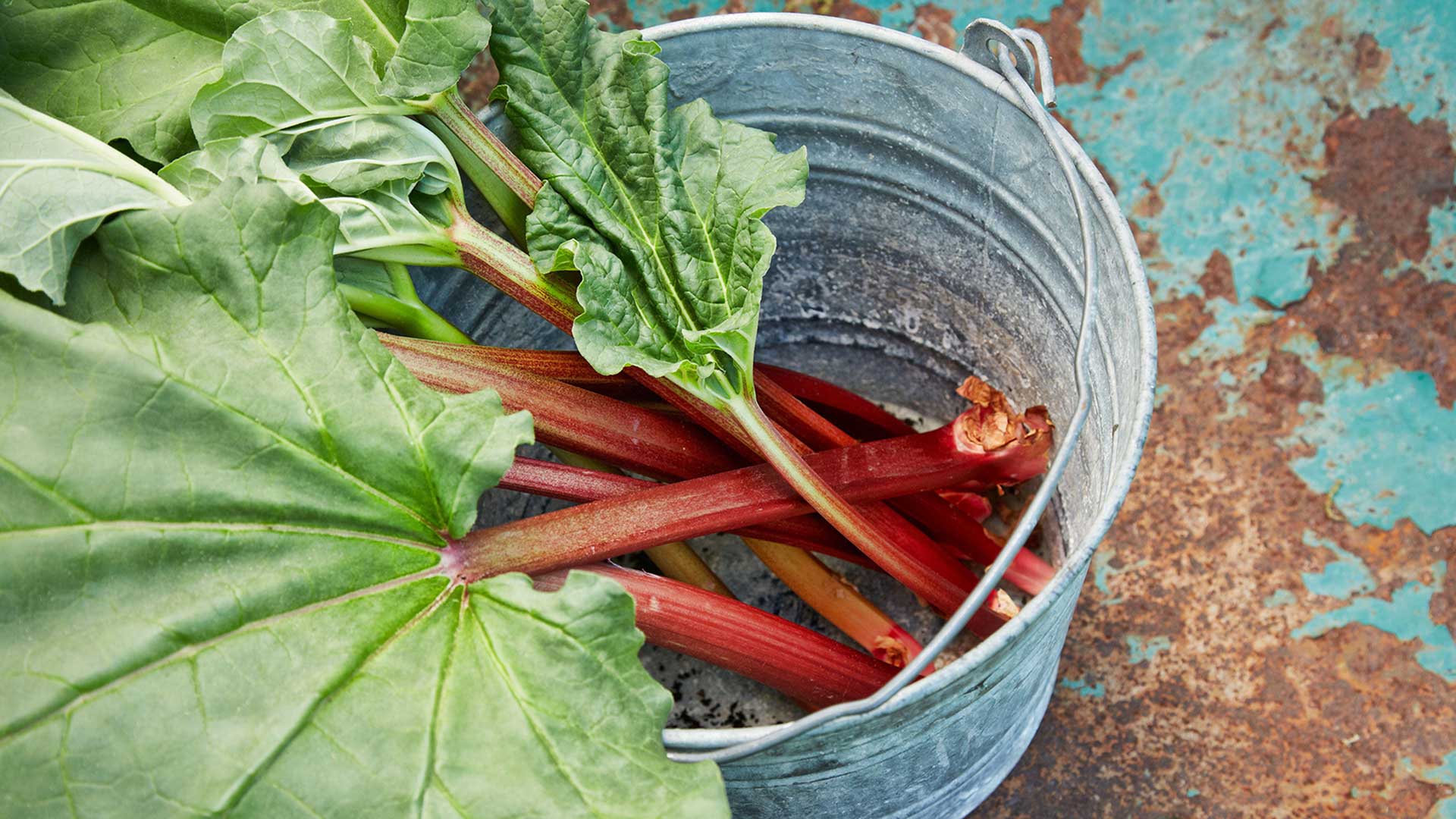
You will need to wait a while before you can whip up a rhubarb galette or rhubarb eton mess. Patience is key with new rhubarb plants, as Sarah points out how you shouldn’t harvest them at all in the first season. “In the second season, 12 to 14 months after planting, start picking when the leaves have unfurled, and the stems are approximately 30cm long,” she says.
“Harvest the stalks by gently twisting the stems and pulling from the base of the plant. Never take more than half of the stems at a time, as over-cropping will reduce the plant’s vigour.”
According to Rob, you should generally stop harvesting by midsummer to allow the plant to regain energy for the following year, although he points out that a few varieties can be harvested for longer into the season.
Only eat rhubarb stems, which can be delicious when properly cooked. Do not eat the leaves, as they are poisonous. Keep a watchful eye on pets near your rhubarb plant, too.
FAQs
What are some recommended varieties of rhubarb to grow?
“Rhubarb doesn’t just have to be for spring,” says Sarah, highlighting how the right succession of varieties can give you harvests from March until August. Her recommendations include “Timperley Early” which crops from March to May, “Raspberry Red” which crops from March to June, and “Victoria” which crops from May to August.
As well as these three, Rob also recommends “Champagne”, which he says is “ideal for forcing, producing tender, pink stems with a delicate flavour.” You can buy "Champagne" rhubarb plants from Suttons.
How do you force rhubarb?
You may have seen rhubarb growing under special terracotta pots (which you can buy from Crocus). This is a technique called “forcing”, somewhat similar to forcing hyacinths indoors, and encourages an earlier rhubarb harvest.
Cover the crown with a large pot or forcing jar in late winter, advises Rob. “This excludes light, encouraging long, tender stems that are ready weeks earlier than usual. Forced rhubarb has a beautiful pink colour and a sweeter taste.”
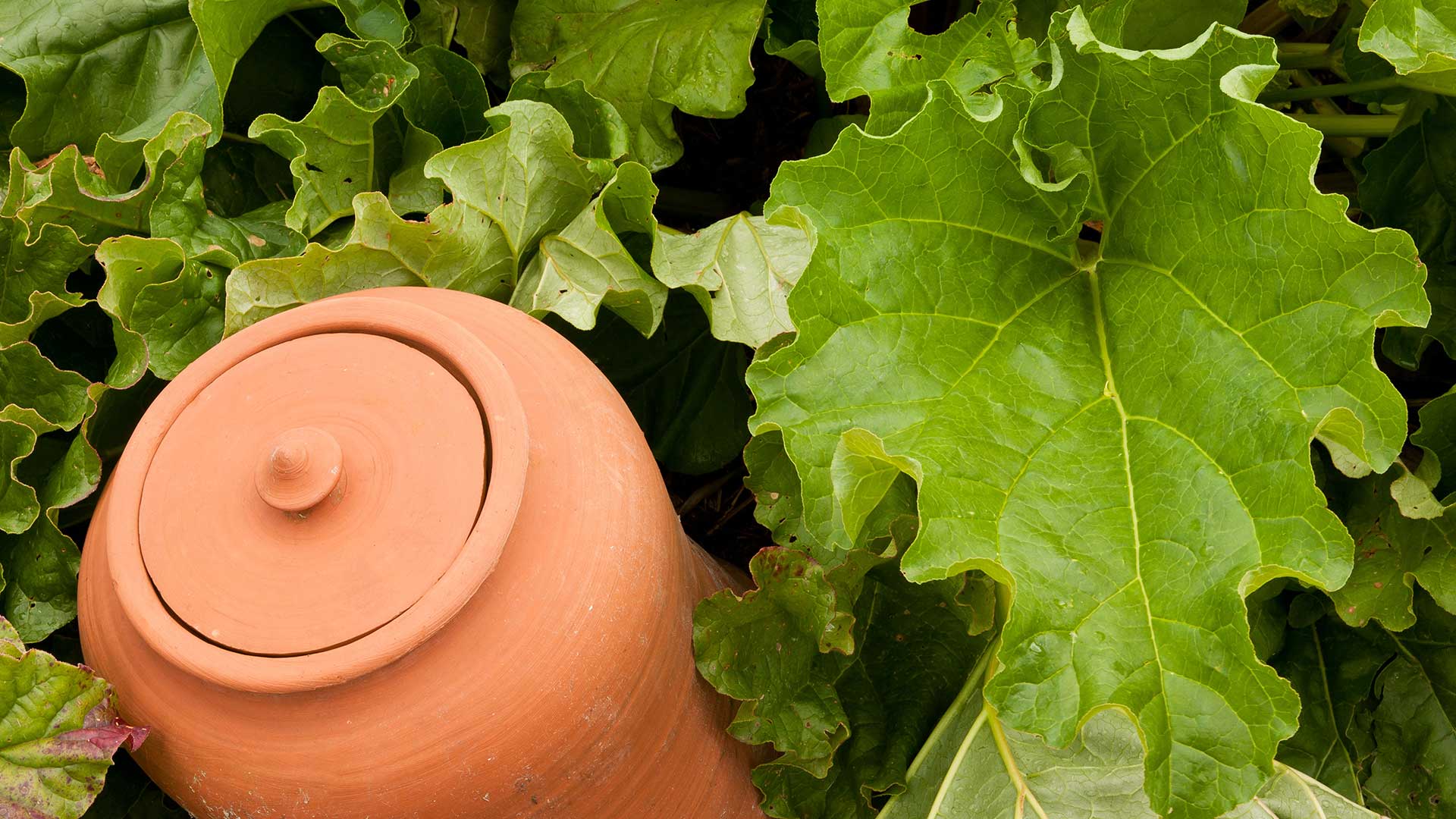
Can you grow rhubarb in a container?
Rhubarb can be grown as a patio container plant, as long as the pot is big enough. Angharad recommends using one that’s 20 inches deep, with drainage holes, well-drained soil, and a slow-release fertilizer.
Plants in pots tend to dry out much quicker than plants in the ground, so be sure to water potted rhubarb often. Just be careful not to overdo it.
Looking for more outdoor jobs to tick off this spring? Our guide on how to sort the garden out has lots of ideas.







